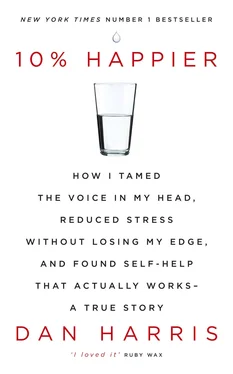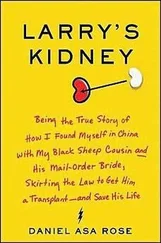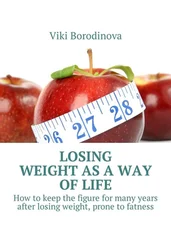Buddhism’s secret sauce went by a hopelessly anodyne name: “mindfulness.” In a nutshell, mindfulness is the ability to recognize what is happening in your mind right now—anger, jealousy, sadness, the pain of a stubbed toe, whatever—without getting carried away by it. According to the Buddha, we have three habitual responses to everything we experience. We want it, reject it, or we zone out. Cookies: I want. Mosquitoes: I reject. The safety instructions the flight attendants read aloud on an airplane: I zone out. Mindfulness is a fourth option, a way to view the contents of our mind with nonjudgmental remove. I found this theory elegant, but utterly unfeasible.
On the cushion, the best opportunities to learn mindfulness are when you experience itches or pain. Instead of scratching or shifting position, you’re supposed to just sit there and impartially witness the discomfort. The instruction is simply to employ what the teachers call “noting,” applying a soft mental label: itching, itching or throbbing, throbbing . For me, this was infernally difficult. A daggerlike tingle would appear under my thigh, a little pinprick portal to Hades, and I would grit my teeth and question the choices I was making in life. I couldn’t suspend judgment; I hated it.
The idea is that, once you’ve mastered things like itches, eventually you’ll be able to apply mindfulness to thoughts and emotions. This nonjudgmental noting— Oh, that’s a blast of self-pity . . . Oh, that’s me ruminating about work —is supposed to sap much of the power, the emotional charge, out of the contents of consciousness.
It was easy to see how scalable mindfulness could be. For instance, it’d be late in the day, and I’d get a call from the World News rim telling me the story I’d spent hours scrambling to produce was no longer going to air in tonight’s show. My usual response was to think to myself, I’m angry . Reflexively, I would then fully inhabit that thought—and actually become angry. I would then give the person on the other end of the line some unnecessary chin music, even though I knew intellectually that they usually had a very good reason for killing the piece. In the end, I was left feeling bad about having expended energy on a story that didn’t air, and also feeling guilty for having been needlessly salty. The point of mindfulness was to short-circuit what had always been a habitual, mindless chain reaction.
Once I started thinking about how this whole system of seemingly spontaneous psychological combustion worked, I realized how blindly impelled—impaled, even—I was by my ego. I spent so much time, as one Buddhist writer put it, “drifting unaware on a surge of habitual impulses.” This is what led me on the misadventures of war, drugs, and panic. It’s what propelled me to eat when I wasn’t hungry or get snippy with Bianca because I was stewing about something that happened in the office. Mindfulness represented an alternative to living reactively.
This was not some mental parlor trick. Mindfulness is an inborn trait, a birthright. It is, one could argue, what makes us human. Taxonomically, we are classified as Homo sapiens sapiens , “the man who thinks and knows he thinks.” Our minds have this other capability—a bonus level, to put it in gamerspeak—that no one ever tells us about in school. (Not here in the West, at least.) We can do more than just think; we also have the power simply to be aware of things—without judgment, without the ego. This is not to denigrate thinking, just to say that thinking without awareness can be a harsh master.
By way of example: you can be mindful of hunger pangs, but you think about where to get your next meal and whether it will involve pork products. You can be mindful of the pressure in your bladder telling you it’s time to pee, but you think about whether the frequency of your urination means you’re getting old and need a prostate exam. There’s a difference between the raw sensations we experience and the mental spinning we do in reaction to said stimuli.
The Buddhists had a helpful analogy here. Picture the mind like a waterfall, they said: the water is the torrent of thoughts and emotions; mindfulness is the space behind the waterfall. Again, elegant theory—but, easier said than done.
There were many areas of my life in which I badly needed this mindfulness thing. Eating, for example. After quitting drugs, food became my replacement dopamine rush. Once I met Bianca, the situation got worse, because I was also happy and homebound. She would cook large meals of pasta followed by fresh-baked cookies. For a bantamweight, I could crush plate after plate. I would tell myself I would be moderate, but once the frenzy started, I couldn’t stop. I was feeding the pleasure centers of my brain rather than my stomach, and I was particularly bad with dessert. The fact that my parents never let me have sugar when I was a kid produced a lifelong obsession. (The same thing happened with television, ironically.) I could eat piles of cookies, my teeth scything through the chewy goodness. Airports were particularly dangerous. Auntie Anne, that seductress, would lure me in with a bouquet of Cinnamon Sugar Stix. As my paunch grew, it became the source of nearly as much angst as the recession of my hairline. Neither vanity nor mindfulness helped, though. It wasn’t uncommon for me to get directly up from meditating and stuff my face, enter into a postprandial remorse jag, and take a nap.
But where I really could have used a nice dose of mindfulness was in dealing with the events set in motion after I received a call from Amy Entelis, the senior vice president for talent development. Amy was in charge of recruiting and managing all the anchors and correspondents. She reached me when I was on my way to the airport for a story. This was in early September of 2009, about a month after I’d started meditating. She had big news. Later in the day, she told me, management would announce that Charlie Gibson had decided to step down as the anchor of World News . They would simultaneously announce that Diane Sawyer would be leaving Good Morning America to take over the evenings. This was huge. I was happy for Diane. She’d initially agreed to host GMA a full decade ago on a temporary basis, but she’d performed so well that the bosses repeatedly cajoled her into sticking around. Now the brightest star in our news division would be ascending to the Big Chair, a promotion many of us felt she richly deserved.
It didn’t take long, though, for me to shift into what-does-it-all-mean-for-me mode. This announcement would surely set off an avalanche of a magnitude akin to what happened after Peter Jennings died. Many dominoes were about to fall. Diane’s departure from the mornings meant the brass would probably have to remake the anchor team on GMA , which would have ripple effects throughout the on-air ranks. What was coming was a radical reshuffling of the dramatis personae. I had been anchoring World News on Sundays for about four years now and still loved it, but if new jobs were going to be opening up, I wanted in. My desire for forward momentum—even when the lack thereof was illusory—roughly resembled that of Woody Allen in that classic scene from Annie Hall where he breaks up with Diane Keaton. “A relationship, I think, is like a shark,” he says. “It has to constantly move forward or it dies. And I think what we got on our hands is a dead shark.”
Not long after the Gibson-Sawyer news, the situation intensified. We got word of two other departures: John Stossel, the co-anchor of 20/20, and Martin Bashir, one of the three anchors of Nightline . The latter development was of especial interest to me. After years of working as a correspondent on Nightline , I had begun making it known that I would love to join the staff as an anchor. It seemed like the perfect job for me, the type of gig I could ride all the way to retirement. I genuinely enjoyed the rush of “crashing” short pieces for GMA and World News —especially in breaking news situations—but these stories were basically haikus: 90-to 120-second-long recitations of the day’s events. On Nightline , the pieces ran anywhere from four to eight minutes. If the story was really good, they might give you the entire half hour.
Читать дальше












